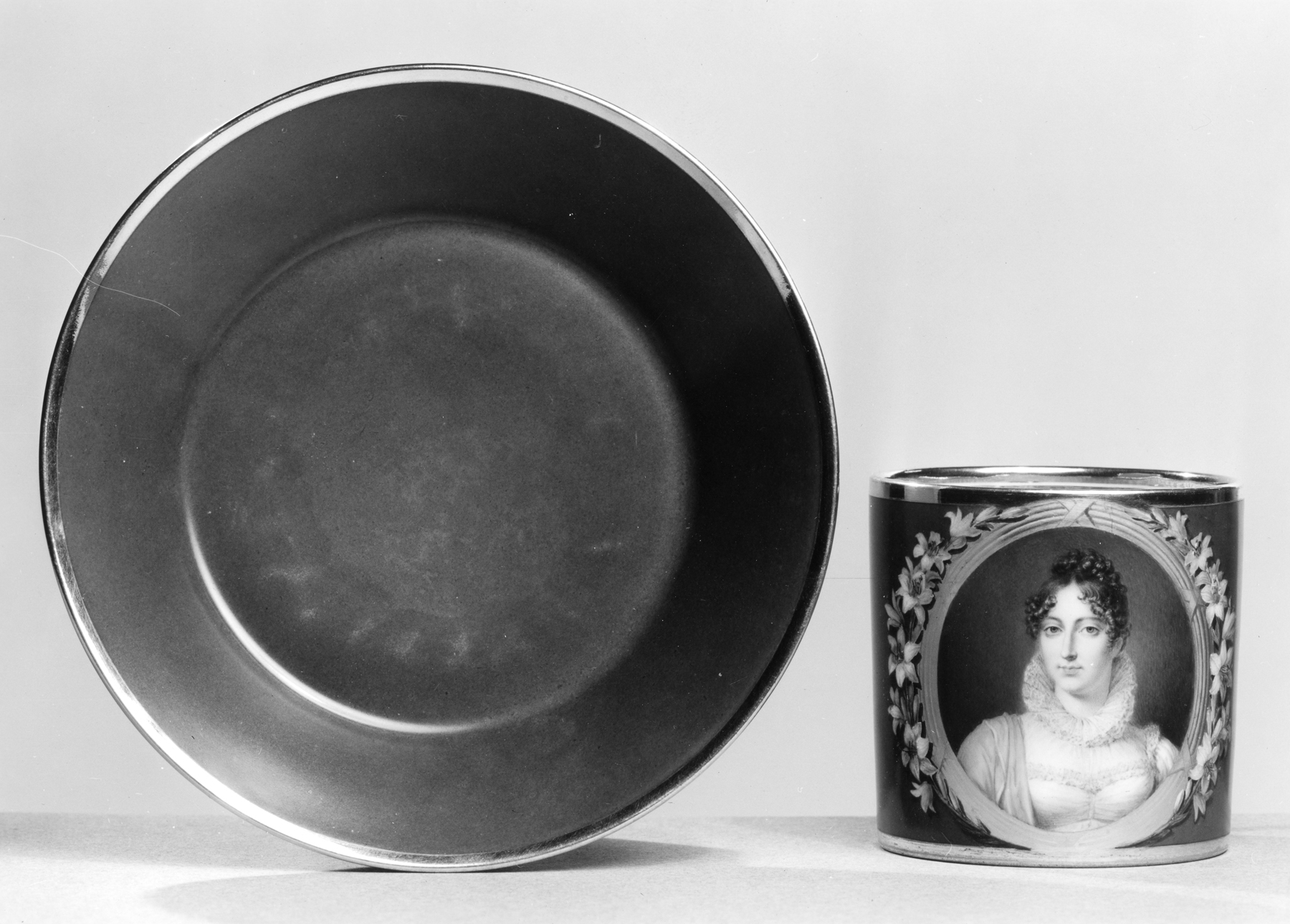Cup and Saucer (gobelet ‘litron’ et soucoupe)
“Litron” cups, like this one, would typically be used to consume hot beverages such as tea, coffee, and drinking chocolate. The word “litron” refers to a wooden cup (9.4 cm high and 10.3 cm in diameter) used in the 17th century as the standard measure of grain, flour, salt, and peas. While this particular gobelet ‘litron’ does not conform to these proportions, its cylindrical shape recalls the old wooden vessel. Ornamented with a deep-rose ground color, the cup and saucer set are embellished with gilt work. The cup features a large reserve, or area reserved for imagery, with a portrait of a woman that is possibly Marie-Thérèse-Charlotte of France, the eldest child of Marie-Antoinette and Louis XVI and their only offspring to survive the Revolution. The woman wears a muslin ruff and gown, both popular fashions in the early 19th century. A thick band of gilding encircles the portrait and garlands of white lilies, a symbol of the Bourbon monarchy, surround the portrait’s golden frame. Perhaps the lilies are a reference to the sitter’s support of the Bourbon Restoration of King Louis XVIII, who ruled from 1814-1824.
Inscription
Geographies
France, Sèvres (Place of Origin)
Measurements
Overall Cup & Saucer (A & B) H: 3 5/16 × Diam: 6 11/16 in. (8.4 × 17 cm); Cup (A) H: 3 1/8 × W with handle: 4 3/8 × D: 3 3/16 in. (8 × 11.1 × 8.1 cm); Saucer (B) H: 1 5/16 × Diam: 6 11/16 in. (3.4 × 17 cm).
Location in Museum
Not on view
Accession Number
In libraries, galleries, museums, and archives, an accession number is a unique identifier assigned to each object in the collection.
In libraries, galleries, museums, and archives, an accession number is a unique identifier assigned to each object in the collection.
48.734






